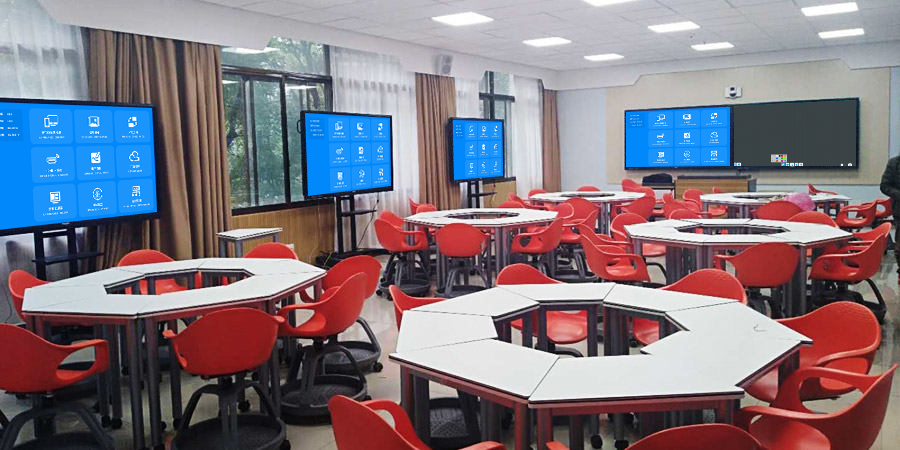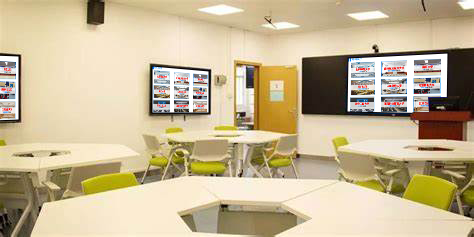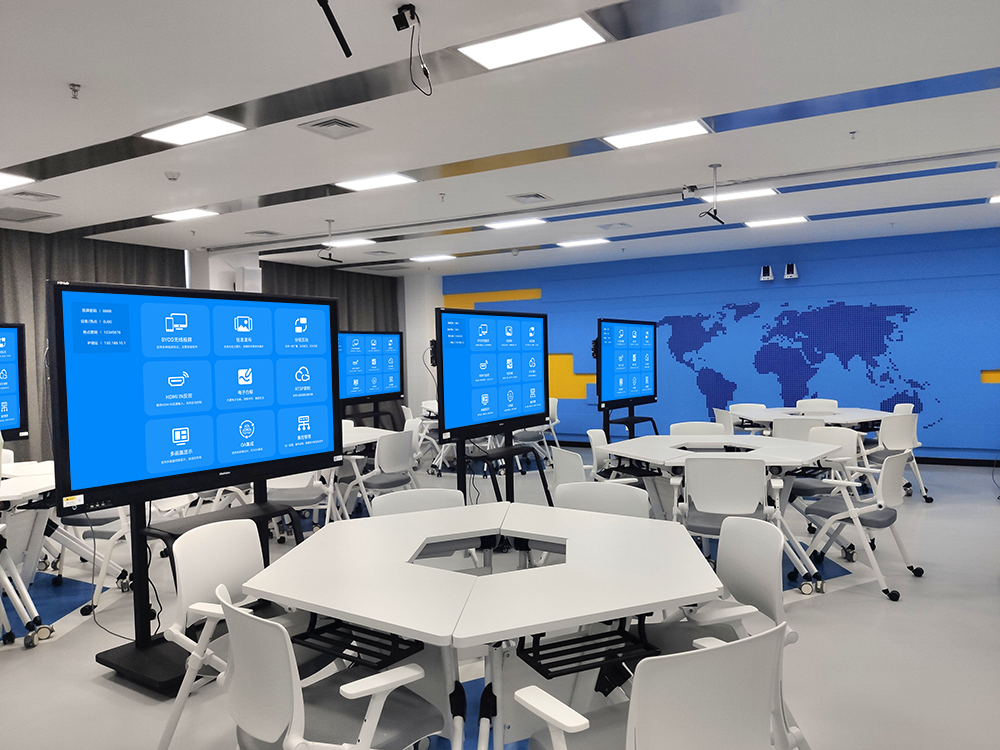Group Discussions: Making Idea Collaboration More Efficient
Group discussions are a key method for brainstorming in meetings, classrooms, training sessions, and other settings. Technology tools designed for group discussions can address the common problems of traditional sessions, such as disorganized notes, inefficient sharing, and difficulty in consolidating ideas. These tools ensure that every group’s thought process is clearly presented, ultimately achieving a collaborative value where the whole is greater than the sum of its parts.
I. Multiple Groups Working in Parallel, with Autonomous Control
(I) Independent Spaces for Focused Work
The technology supports dividing a venue into several independent discussion units. Each group gets its own dedicated screen (such as a group display or projector screen), and their content is kept separate. In a training session with 30 people, 6 groups can discuss simultaneously without interference. One group can analyze a market strategy while another refines product details. Each group’s screen only shows its own content, allowing members to focus on their specific topic without being distracted by other groups’ discussions.
(II) Flexible Switching and Unrestricted Pace
Groups can control their own discussion pace without waiting for a unified command. A group that needs more time can continue to work on its own screen, while a group that finishes early can review the discussion process to check for any gaps. In an educational setting, the teacher doesn’t need to issue a universal “stop” command, respecting the thinking rhythm of each group.
II. Real-Time Recording and Mirroring for Visualizing Ideas
(I) Capturing Inspiration in Multiple Formats
Group members can use their phones, tablets, and computers to record ideas, supporting various formats such as text input, handwritten annotations, image insertions, and mind map creation. During a product discussion, one person might list features in text, another might sketch an interface draft, and a third might upload a competitor’s screenshot. This diverse information is aggregated in real-time on the group screen, preventing the loss of inspiration.
(II) One-Click Mirroring to Share Results
After a group finishes its discussion, there’s no need to create a formal document. The screen content can be mirrored directly to the main display. The results from all 6 groups can be shown in a split-screen view or in a rotating sequence. Each group can explain its core ideas in just 2 minutes, eliminating the time-consuming process of “one group reports while everyone else waits.” In a corporate strategy session, the marketing group’s user personas, the R&D group’s technical roadmap, and the operations group’s implementation plan can be compared side-by-side on the main screen, making it easier to find points of intersection.
III. Cross-Group Interaction and Integration for Deeper Value
(I) Interactive Annotations to Deepen Discussion
Other groups or the host can annotate a group’s results on the main screen, marking questions or adding suggestions. These annotations are synchronized in real-time to that group’s screen. In an educational discussion, if Group A’s “environmental plan” is annotated with “budget risks” by Group B, Group A can immediately update their screen with a cost calculation, upgrading the discussion from a series of individual monologues to a “deep exchange of ideas.”
(II) Smart Consolidation of Key Ideas
The system can automatically capture frequently used words and key data from each group’s results to generate a summary map. After a training session, the main screen can automatically extract keywords like “client needs” and “technical bottlenecks” that appeared in the 6 discussions, along with their corresponding solutions. This helps organizers quickly identify consensus and disagreements, avoiding the omissions and biases of manual summarization.

IV. Scenario-Based Applications: Making Discussions More Effective
(I) Corporate Meetings
- Project Kick-off: 5 departmental groups discuss their roles and potential risks. After the results are mirrored, key connection points between departments are annotated on the main screen, and a collaboration mechanism is agreed upon on the spot, saving 40% of the time compared to traditional meetings.
- Problem Post-Mortem: Groups analyze shortcomings in their work. After the mirrored content is annotated by other groups, a feedback loop is created, including “problem description – responsible department – improvement measures,” preventing the review from being a mere formality.
(II) Classroom Teaching
- Group Topic Research: Students are divided into groups to research “urban traffic optimization.” Each group uses a map to annotate congestion points and data to explain the causes. After the results are mirrored, the teacher guides the class to consolidate a plan, which ultimately forms a comprehensive proposal covering buses, subways, and bike-sharing, significantly expanding the scope of their thinking.
- Debate Preparation: The pro and con sides are each divided into 3 groups, responsible for the initial argument, rebuttal, and summary, respectively. After each group’s strategy is mirrored, groups on the same side can learn from each other’s viewpoints, making their debate logic more rigorous.
(III) Training Activities
- Case Study Analysis: Participants are divided into groups to analyze a business case, using charts to show their SWOT analysis. After mirroring, the trainer annotates blind spots in the analysis, and each group immediately adds more information, improving the depth of case understanding by 50%.
- Solution Co-creation: New employees are divided into groups to design an event plan. After the results are optimized with cross-group annotations, the main screen consolidates the best plan, which is used directly as a template for implementation, ensuring that the training outcomes are quickly put into practice.
The core value of group discussions is to ensure that every participant’s voice is heard and that individual thoughts combine into a collective force. The right technology tools, by ensuring focus, simplifying sharing, and deepening interaction, transform discussions from a “formal exercise” into a “substantive co-creation,” ultimately leading to higher quality outcomes.